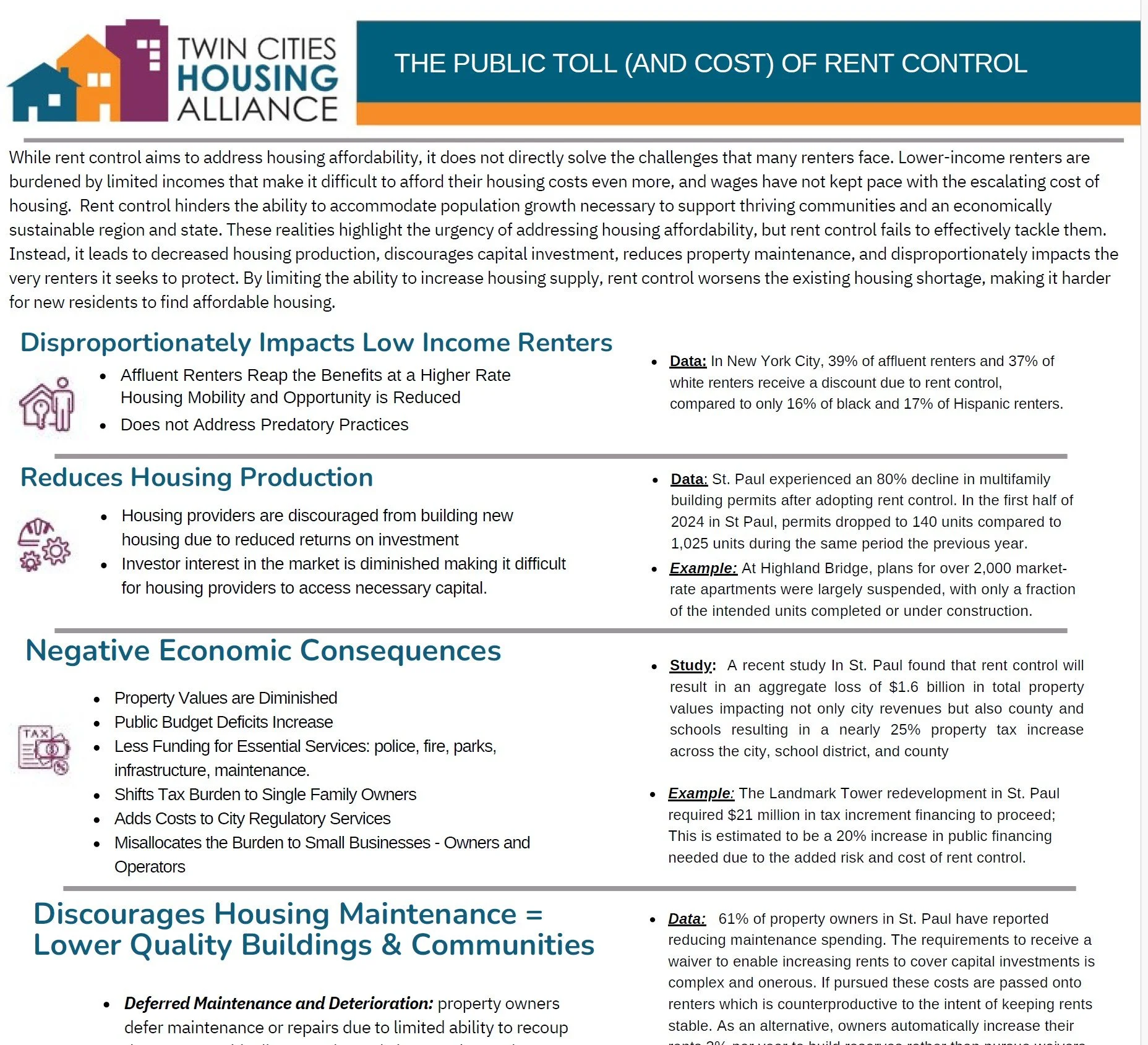The Public Cost of Rent Control
While rent control aims to address housing affordability, it does not directly solve the challenges that many renters face. Lower-income renters are burdened by limited incomes that make it difficult to afford their housing costs even more, and wages have not kept pace with the escalating cost of housing. Rent control hinders the ability to accommodate population growth necessary to support thriving communities and an economically sustainable region and state. These realities highlight the urgency of addressing housing affordability, but rent control fails to effectively tackle them. Instead, it leads to decreased housing production, discourages capital investment, reduces property maintenance, and disproportionately impacts the very renters it seeks to protect. By limiting the ability to increase housing supply, rent control worsens the existing housing shortage, making it harder for new residents to find affordable housing.
Read on for specific data outlining the public cost of rent control and why it is a failed housing policy solution.

